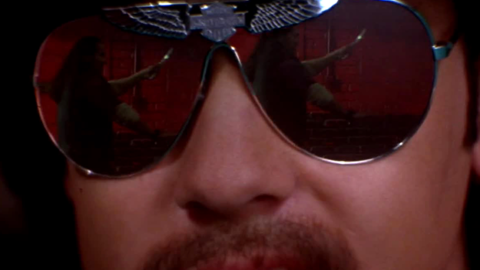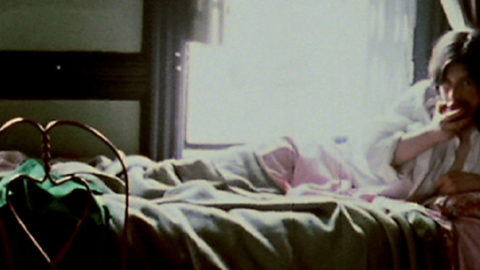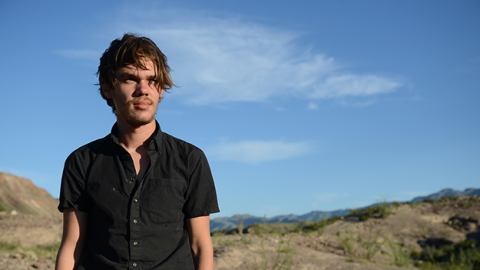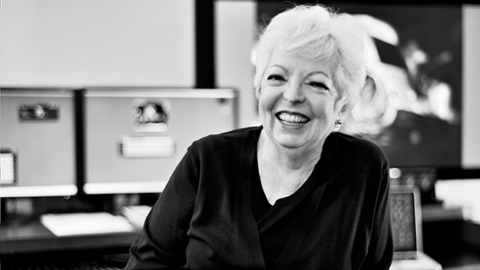Interview: Tony Lawson
Strings pluck, heads nod. The dozens gathered for the chamber concert are “the best people,” as we’ve been assured by the gatekeepers of society. It’s 18th-century England, and we’re in the home of Lady Lyndon, who is performing a dutiful rendition of a Bach concerto for the charmed crowd. In Stanley Kubrick’s Barry Lyndon (1975), the story shifts drastically when this performance is disrupted by the spited heir to the family fortune, Lord Bullingdon, whose public indictment of his adopted father, the “insolent Irish upstart” fuming in the front row, prompts a public thrashing.
In William Thackeray’s novel, Bullingdon’s abdication is more prolonged. The public beating by Barry takes place in a hunting field, not in closed quarters. Bullingdon handwrites his denunciation days later, leaving the epistle on his bedroom table, where it’s discovered long after he’s fled. Kubrick’s liberties with the source material pay off handsomely. The sheer horror of a chamber concert gone to hell is an ideal venue for bedlam. The violinists slowly dropping their bows. Lady Lyndon, the amateur harpsichordist, humiliated. Silence filling the palatial surroundings.
The editor of Barry Lyndon, Tony Lawson, recalls the choice of Bach fondly. “It sets up this beautifully sedate, grand occasion that goes completely to shit, horrible,” he says. “From that point on, Barry is ostracized by society. It’s a hugely public event that has enormous repercussions.”
This particular sequence will be amplified all the more when the film is presented this weekend in Brooklyn at the Kings Theatre, with live orchestration from the 50-piece Wordless Music Orchestra, under conductor Ryan McAdams. The occasion, a world-premiere live score of the film, celebrates Kubrick’s audacious commitment to scoring his masterpiece strictly with existing music of the period. It’s also something of a vindication, given Barry Lyndon’s mixed reception in 1975, in part because of its replication of the sounds and pace of Georgian life.
In March, Lawson spoke at length by phone from his home in the English countryside, along the border of Wales, to reflect on his time working with Kubrick on Barry Lyndon, as well as his collaborations with other directors, namely Nicolas Roeg (Bad Timing, 1980; Eureka, 1983; Insignificance, 1985) and Sam Peckinpah (Straw Dogs, 1971; Cross of Iron, 1977) who embraced the use of existing music to startling effect.
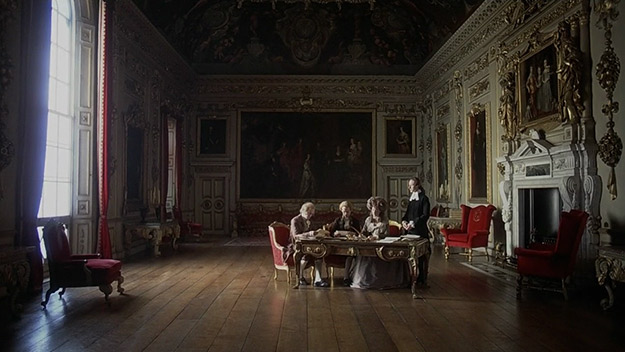
Barry Lyndon
I’m fascinated by the notion of Stanley Kubrick as a record collector. I picture him coming to the editing room with armfuls of records.
Shelves! Whole shelves filled with records. He had a projection room in his house, with two fantastic projectors. If I remember correctly, the auditorium of the cinema was shelved out with records. He’d get a bunch every now and then and bring them into the cutting room and take the old ones back. So, we’d been listening to music—largely classical music, but not always—during the day while we were working.
Stanley loved technology. We had a six-plate Steenbeck that had been converted to have one of the sound heads as a record head, so we could record the basic synchronized soundtrack of the film—in other words, the dialogue—and add music to it and then play it back as a mix. So we were often fooling around with music. I do remember Stanley sitting at the Steenbeck and me with the record needle in my hand, and he’d say “Drop it!” when he wanted it to start.
The Stanley Kubrick Archive at the University of the Arts London has several of producer Jan Harlan’s letters to labels like Deutsche Grammophon and Polydor, about forming partnerships and gaining access to their catalogues.
That was very important, certainly in terms of listening to anything and everything while we were working. I believe it was Jan who was very heavily into listening to chamber music at that time, and he pointed us to the Schubert piano trio.
At some point in the production there was talk of hiring a traditional composer.
We did dally with Nino Rota. I have a memory that Ennio Morricone was mentioned at one point, though I don’t know how far that went.
In Harlan’s correspondences, it’s noted that music unions frowned upon the use of gramophone recordings as score.
That’s interesting, isn’t it? I think that in the film community, everyone believes—and to a large extent it’s still true—that you have to compose to the film, with one or two exceptions, like Martin Scorsese, the supreme exponent of taking prerecorded music and putting it to good effect in his films. But Stanley was, obviously, [an exception] too. He knew how to exploit every last emotional drop of energy from a piece of music, in terms of marrying it to the image and the story. Even the ordinary marches, they really were very emotional pieces. They really delivered a way of getting straight to the point of the scene.
When we were recording the marching, the British tune [“The British Grenadiers”] that everybody marches to at various points, we had a click track, which was a horrible sound, a really aggressive, horrible sound. We were recording the drummers—four or five snare drummers—and we needed a bigger sound, so they were multi-tracked, several times. Stanley refused to allow [arranger] Leonard Rosenman, once he’d [recorded] the first part, to use the drums as the guide track, rather than the click track. Stanley said he must use the click track, because it’s perfect. By the third or fourth take, Leonard was bursting with anger. He stormed off the stage and Stanley had to go get him back and calm him down. It was wonderful, Stanley being so precise that it’s got to be exactly like the click track, and Leonard knowing that you don’t need it, once you’ve got one set of drums. But neither would give way. It was one of those startling moments where you suddenly realize characters come through in their behavior.
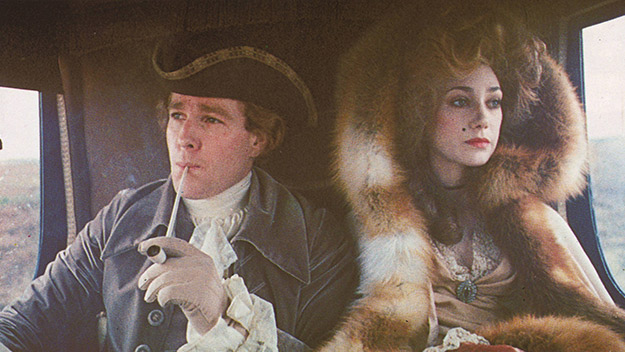
Barry Lyndon
Were you involved with the recording of Michael Hordern’s narration?
I was actually operating the Nagra tape recorder. There’s a film studio five minutes from Stanley’s house. We took a sound booth and took our equipment down there and Michael read it. At one time, instead of using a narrator we were going to have titles, rather like silent-movie titles, interspersed throughout the film. We tried it and found that it just slowed the film up. It didn’t help. We went to narration instead. Even that is so audacious, because the narrator tells you what’s going to happen before it happens, and then you watch it happen. That’s against all the rules. [Laughs] To tell you what’s going to happen and then watch it is just mad.
What was it like cutting the more prolonged sequences in the film, like Barry and Lady Lyndon meeting over cards or the duel between Barry and Lord Bullingdon?
They were deliberately cut like that. When you think about it in today’s terms, where everybody’s so anxious to cut to the next shot and people are constantly talking about pace and energy, this was deliberately flying in the face of that. Every time I think about the duel in the barn, I think, Jesus, how just completely cheeky we must’ve been. Ten minutes, that scene goes on. He makes you wait.
I remember reading a script before the shoot started that was much closer to a kind of version of Tom Jones. It was much more bawdy, much less austere, less restrained. As the shoot went on, Stanley produced new pages pretty much every day. That might be an exaggeration, but it certainly felt that way.
How long did it take to lock the picture?
At least a year. I do remember that Warner Bros. was expecting it for a Christmas release, and it wasn’t out until the following Christmas. We took a long time. Just to give you an example, the duel scene with Bullingdon in the barn took us around six to eight weeks to edit. It was a 10-minute scene, and the process of getting there was quite long. At some point during the editing of that scene, we got the Handel “Sarabande” as the soundtrack. I was surprised, watching the film again recently, the number of variations of that “Sarabande” we ended up [using in the film].
In your work with Nicolas Roeg, there were often sequences structured around existing music, as well. In Eureka, for example, when an arctic prospector (Gene Hackman) strikes gold, the choice was Wagner’s Das Rheingold, about the flowing of the Rhine River, which mirrors the gold gushing from the mountain. What do you remember about assembling that sequence?
Having worked with Nic on several occasions, I knew he looked for moments of great intensity and mystical experience, shall we say. I knew that whatever I did with that scene there was going to have to be fairly momentous, because of what it delivers. It delivers the beginning of the story. I was already well aware that I’d have to find something in myself to bring that out. It was an obvious choice, I have to say, using Rheingold, just because of gold, if nothing else. It’s got that wonderful build in it. Starts small, [but] it’s constant. You know there’s more and more coming, so it’s driving you on, but making you wait, as well. And knowing that something’s going to be delivered, something’s coming at the end of it.
I used to track far more when I first started editing than in later years. For example, with Neil Jordan, we tried all sorts of music all the time. Then we’d throw it all away and get a composer. None of it lingers [in the film], as it were, it was used just as a springboard. [Lawson edited several films for Jordan, including Michael Collins (1996) and The Butcher Boy (1997).] But with Nic, it was both exciting and challenging to find music that could actually stay in the film and function as a score. Certainly for me, as an editor, it’s a way of finding a way into a scene. If I happen upon a piece of music I feel represents the scene or augments the scene in some way, it’s a huge key. It circumnavigates a journey that might take a bit longer, if you’re just searching within yourself. It’s a way to an emotional level, I suppose.
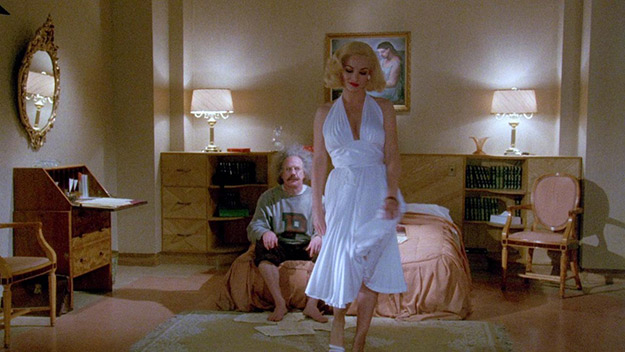
Insignificance
What you said about the mysticism in Eureka connects to Insignificance, as well. In the gold sequence in Eureka, it cuts to a fortune teller (Helena Kallianiotes) who is simultaneously being cut down and weakened as Hackman’s character enriches himself. In Insignificance, when the professor empowers himself by tossing his life’s work from a window, the moment is punctuated by cutaways to a woman in distress, writhing after receiving a punch. Someone is always taking the fall for someone else’s rise. And then there’s the Native American elevator operator, who rides to the top floor of a skyscraper to the sounds of “America” by Death Comet Crew, then does an Indian call to the Manhattan skyline from the rooftop. The movie really recalibrates itself in that moment.
It’s interesting, isn’t it? It’s got nothing to do with anything. [Laughs] You’d need to ask Nic about the inclusion of the Indian at all. It does work, doesn’t it? It’s saying, This is nature and these poor people are fucking around about nothing that’s absolutely relevant in it other than egos. It’s a wonderful contrast, modernity and the pressures of modernity against the simple, natural life.
Bad Timing is another film with a wide range of musical influences. It’s also a film about establishing a timeline. The inspector is piecing together what happened at a crime scene, filling in and intuiting mysterious lapses in time.
The original script was always designed to be in the broken time. Nevertheless, when we went to edit the film, none of those juxtapositions ended up as dictated in the script. They were all experimented with; it took a long process. It might have been easier nowadays with digital technology and ease of access to the beginning and end of a film within a second or two. In those days, to move one piece of film from reel one to reel 10 was a big deal. You couldn’t just do it with a copy-and-paste. You’d wait for a week—maybe more, depending on how complex the restructuring was—to see whether you’d done any good or not. We did a lot of it on paper, actually. I had what would now be thought of as a spreadsheet, but in those days it was physical—a strip of card with a brief description of the scene and the scene number on it that slotted into a holder, so we could build up a picture of the entire film in this holder. If you wanted to move a scene, in theory, you could literally just move this piece of card. We’d write out the film in longhand and then move it in a different order.
In films like Bad Timing and Insignificance, there are several striking graphic matches—cuts from an object to a corresponding object in a different location, or a gesture that links perfectly to a character’s movements elsewhere, sometimes a world away.
Definitely, yeah. Nic would make it easier for himself, in some instances, where he would deliberately [stage a scene to link to another scene]. For instance, in Bad Timing there are several zooms into strange objects, one of them being a fire extinguisher, if I remember correctly. Then there’s a smash cut, I suspect, to the inside of an ambulance, or something like that. He would give himself the opportunity to make a statement with an image that would indicate it would be a good place to make a smash cut to something entirely different.
It was one of the things that came with the territory of working for Nic. He’s looking for those sorts of things all the time, trying to find connections and word-association-type connections that aren’t necessarily the logic of a thought. He’s looking for those links and word and image associations. All those things are wonderful to find.
Sam Peckinpah is obviously a master of mining footage for these moments, as well. How did you first connect with him on Straw Dogs?
I was working for an editor called Norman Savage, who had been David Lean’s editor, toward the end of Norman’s life. When he was looking for an editor to work with in England [on Straw Dogs], Sam must’ve looked at his credits and thought, “This guy’s worked for David Lean.” As it turned out, they were like oil and water. There was no way they were gonna get on. Norman left the production early, around the second or third week of shooting. It was totally obvious he didn’t understand Sam and Sam didn’t understand him. It was a bad match. But it left me and my assistant on the production. Because Norman had left, it put Sam in an awkward situation with the studio. They wanted to be reinsured that the film was all right, so Sam was persuaded that he needed to show the studio an edited scene. I was the only person who knew the footage and had some sort of skill. I wasn’t a practiced editor, but I could do it, as it were. So I was [tasked with] editing this sequence.
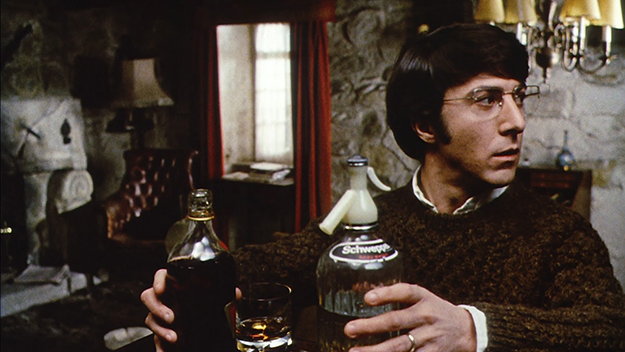
Straw Dogs
Do you recall which sequence it was?
It was when Dustin Hoffman walks into the pub in one of the early scenes and meets up with strangeness and village life. If you look at the scene, there are some quite difficult camera angles. It wasn’t a pretty scene, in that sense. We edited it and Sam thought it worked well and, because of that, we cemented a friendship of sorts.
A thread that connects Straw Dogs and Cross of Iron is the use of chanting and taunting. Cross of Iron is bookended by children singing the folk song “Hänschen klein” over newsreel footage of Nazi destruction. And later, James Coburn cackles over the end credits. In Straw Dogs, there are the childish songs the workers taunt Hoffman with, about amorous relationships with sheep. One worker (Jim Norton) has a maniacal giggle, almost like bleating, and he later finds a tricycle with a squeaky horn that matches his giggle. The taunts they sing are often abruptly cut, mid-song, or buried in the mix. Like Hoffman, the viewer questions what they’re hearing, wondering if they’re truly being targeted.
One of the things that Sam’s always been attracted to is the idea of innocence in the face of brutality. Straw Dogs opens with children singing in a graveyard. He’s often got an element of silliness—but also innocence–in a really inappropriate place. That’s a part of Sam, part of one of his concerns.
There’s a sequence in Cross of Iron where Coburn is concussed and recovering in the hospital. When he’s at his most disoriented, the sounds of patriotic singing consume the mix. It again has the feeling of a taunt.
There’s a good story about the bit where Coburn ends up in hospital. I heard some Japanese taiko drummers, and I thought it was so powerful. I tracked it with that scene. It blew me away, that kind of crazed drumming, and it’s so religious, as well. When I showed it to Sam, he thought it was great. The composer was Ernest Gold, who left it in the temp mix. Gold didn’t like it, obviously, because he could never have [replicated it]. It ends up with this rather weak snare drum, which does work, but I never thought it quite attained the power of these astonishing Japanese drummers.
In the documentary Sam Peckinpah: Man of Iron, Jason Robards dramatizes Peckinpah’s notes to you regarding microscopic cuts for a battle scene in Cross of Iron. The inventory of the memo is incredible, like something out of Herman Melville.
I don’t know whether the filmmakers knew where that came from, but that particular note came because Sam was going home in a taxi after a day in the editing room and he had a journalist with him. He said, “Can you make a note for me?” She took out her pencil and pad and he dictated that. Then we got it the next morning.
You had to be a bit terrified. It’s an intense memo.
It is, isn’t it? Pretty terrifying. [Laughs]
What was it like watching dailies of slow-motion footage with Peckinpah?
When you’re running film through a high-speed camera, there’s acres and acres of absolutely nothing. So we would cut the acres of nothing and just put into the dailies the section of film that had something going on in it, so you wouldn’t have to watch paint dry, as it were. You’re always on the lookout for gems. It’s the job, to look for those moments, to log them, to remember the effect they had on you.
So few people on this side of the Atlantic watch dailies in the old-fashioned way, going at the end of the day into a theater and watching them on a big screen. So many people watch dailies on their iPads now in their own individual room, with no one else. It’s much harder to get a response, from a director in particular. As an editor, that’s what you’re looking for. You sit next to the director in dailies and wait for him to say, “That’s great, oh, I love that” and make a note of it. But that’s kind of disappeared now.
Did Peckinpah welcome others to dailies, or was it a closed environment?
Yeah, he didn’t mind. I think most directors want as many people to come in as possible, because it creates that family feeling, in a sense. We’re all working toward the same end.
Barry Lyndon screens this Saturday, April 8, at the Kings Theatre in Brooklyn with live accompaniment by the Wordless Music Orchestra.
James Hughes is a writer and editor based in Chicago.



